One area that pulps are sometimes put down for is being “sexist.” I find this a somewhat ignorant claim, as the pulps were a product of their time: the early 20th century.
It’s a mistake to look back at that time from ours and put it down. The pulps where no more or less sexist then society of the time, and things were changing for women even then. Women got the right to vote in 1920 and around the same time many were entering the workforce. And making this claim also overlooks the existence of female authors, editors, and artists, and the many strong female characters in the stories.
While, yes, in many stories women are treated as characters who must be saved by the male protagonists, and then marry them at the end, it ignores the many who were not that way.
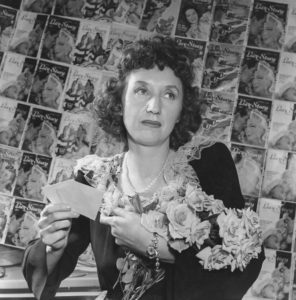
This posting just scratches the surface, as there are probably many that I am overlooking because I’m not aware of. Someone with a wider knowledge of the pulps should put together a more comprehensive work. I am reminded of a similar work for comics, Women and the Comics, written by Trina Robbins and Cat Yronwode. So at most, maybe this will get the ball rolling.
Editors
I know of some pulp editors, and while there are probably several female editors (especially in the romance pulps), the main one I know of is Daisy Bacon (1898-1986), who is best known as the editor for Street & Smith’s romance pulps, in particular Love Story Magazine from 1928-47. It was one of S&S’s top selling magazines, reaching a peak of 600,000 issues sold.
Bacon would write Love Story Writer (1954) to help others in writing for this genre. Bold Venture Press has since reprinted this. For me, I first became aware of her because she took over both the Doc Savage and Shadow pulps toward the end of their runs. She restored them to classic pulp size and writing style, bringing back Walter Gibson to write The Shadow. Sadly, they along with all the rest of S&S pulps where shutdown in 1949.
Laurie Powers has more recently written a bio of her: Queen of the Pulps: The Reign of Daisy Bacon and “Love Story Magazine” (2019).
Dorothy McIlwraith (1891-1976) was another female editor. In 1936, she became the editor of Short Stories, one of the most respected pulp magazines. She continued in that post until 1954. When Short Stories bought Weird Tales in 1938, she took over editorship of it in 1940 until it ended in 1956.
Then there is Mary Gnaedinger (1897-1976), who edited Famous Fantastic Mysteries for its entire run, 1939-53, and its spinoff Fantastic Novels. She is well regarded for the work she did there. While it was published by Munsey, FFM reprinted early fantastic short stories from Argosy and other Munsey magazines. When it moved to Popular Publication, she reprinted longer works from books, sometimes reprinted works that have never been reprinted since their original publication. She also edited the short lived A. Merritt’s Fantasty Magazine as well.
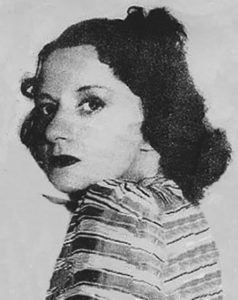
Artists
There were some female artist at the time, though I am not aware of too many. The main one I know of is Margaret Brundage (1900-76), who is largely know for her outstanding, if risque, cover art for Weird Tales magazine. She actually created most of their covers from 1933-38, as well as their companion magazine Magic Carpet and Oriental Stories.
There have been retrospections on her, and there is a work by Stephen D. Korshak and J. David Spurlock: The Alluring Art of Margaret Brundage: Queen of Pulp Pin-Up Art (2013).
Another is Gloria Stoll Karn (b 1923), who did over 100 covers for Popular Publications and other publishers, as well as some interior work. She has been recognized for her work in the field.
Authors
There are many female pulp authors. Several, sadly, had to use pseudonyms to hide this fact, though not all did. There are probably several I am missing, but some I am aware of include C.L. Moore, Leigh Brackett, B.M. Bower, Francis Stevens, Clare Winger Harris, G.G. Pendarves, and Greye La Spina.
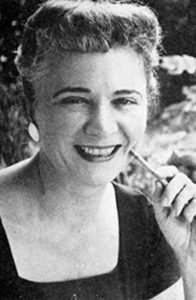
Catherine Lucille Moore (1911-87), who wrote as “C.L. Moore,” while not the first, is credited with paving the way for female sf authors. She later married sf author Henry Kuttner, but was successful before that. Her use of “C.L. Moore” was not to hide her gender, but to ensure her employer didn’t know she was writing on the side (something others did as well).
Moore is probably best known for a couple of characters she created in Weird Tales. One is Northwest Smith, an adventurer who wandered the solar system. The other is Jirel of Joiry, a swordswoman set in medieval France, and among the first female sword and sorcery protagonists.
Leigh Brackett (1915-78) is another science fiction author, called “The Queen of Space Opera.” She wrote a variety of works, but is probably best known for “planetary romances,” and Eric John Stark is her most well-known character. He is an Earthman raised on Mercury by the primitive aboriginals of that planet.
Brackett married sf author Edmond Hamilton. She later moved to writing screenplays, and may be best known in that area for writing the original draft of the screenplay for The Empire Strikes Back.
Bertha Muzzy Sinclair (1871-1940) wrote westerns as “B.M. Bower”, her best-known works include a series dealing with the Flying U Ranch in Montana. She wrote from life, having lived on the western frontier for many years. She was very successful in this, writing some 50 novels. Supposedly when it was revealed that “B.M. Bower” was a woman, it affected sales. Is that true? I’m not sure.
Clare Winger Harris (1891-1968) was an early sf author, with a distinction of having written under her own name. She wrote several short stories for Amazing Stories and others, and all have since been collected.
G.G. Pendarves was really Gladys Gordon Trenery (1885-1938), a novelist and screenwriter who was a popular contributor to Weird Tales and Oriental Stories. Largely forgotten for a long while, in the 70s, there was a plan to devote a volume in the Lost Fantasies series to her, instead 5 works were reprinted in several volumes. However, in recent years there have been a couple of collections of her works which has reprinted the bulk of her work.
Greye La Spina (1880-1969) was another early author who wrote 100 works, mainly known for horror or fantasy. Her first published work was cover featured on the first issue of The Thrill Book, and she had works in other issues of that magazine as well as Weird Tales, Black Mask, and others. Invaders from the Dark was published by Arkham House, reprinting a serial from Weird Tales and deals with an occultist and a werewolf.
Gertrude Barrow Bennet (1884-1948) wrote as “Francis Stevens” and is credited as the “mother of dark fantasy.” I’ve posted on her work The Citadel of Fear, and I think all her works are now in print. It’s sad that her writing career was so short lived, as she mainly wrote to support her family, and when she didn’t need to, she stopped.
I’m sure I’ve missed several other female pulp authors. Please note them in the comments.
Characters
I started to think of strong female characters. And I am sure there are many I’m not aware of who appeared in single works and novels. So I’m mainly going to focus on characters who appeared in series, in multiple works. Again, I am sure I’ve overlooked some even them. So in no particular order…
The Gray Seal was an early pulp hero who appeared in five novel-length works from 1917 to 1935. He was a bored playboy who played at being a cat burgler, and was a master of disguise. But then a mysterious character called The Tocsin figured out who he was and started blackmailing him to help others. In the first story, we finally learn who The Tocsin is: a young woman hiding from a criminal conspiracy. She is also a master of disguise, and through that learned what she needed to send The Gray Seal on his missions. She is certainly the equal to The Gray Seal, and they carry on other missions against crime.
Johnston McCulley wrote a wide number of characters, most in serials, but several stand alone. And, yes, he has several strong female characters. An early one I have posted on is Madame Madcap, one of his “limited revenge heroes” who is going after a gang who sent her father to prison. But we learn that Madame Madcap is actually a pair of identical twin sisters. But we later have The Avenging Twins, another pair of limited revenge heroes who are helped by a mysterious female, almost like Tocsin. And then The Mongoose, another such hero, is actually a brother and sister team.
Hulbert Footner (1879-1944) was a successful Canadian author who is best-known work is probably Madame Rosika Storey, who solved crimes. She appeared in Argosy All-Story from 1922 to ’35, and many were reprinted in book form. Steeger Books has started to reprint her stories, with two volumes so far.
One of the rare female pulp heroes is The Domino Lady, who appeared in the spicy pulps for five stories. She is really Ellen Patrick, whose district attorney father is murdered. Her original stories have been reprinted by two or three publishers, and I’ve posted on them, and new stories have been created. One author has her marrying The Avenger.
I’m not up on western characters, but one female character I know of is Seniorita Scorpion. Steeger Books has reprinted all the stories of this character.
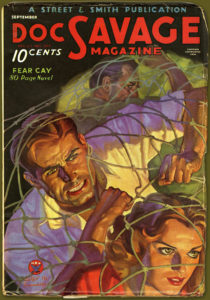
In Street & Smith’s Crime Busters pulp, they tried out many pulp heroes to see if any could be spun off in their own series. The longest of these at 39 stories was Carrie Cashin, a female detective with her own detective agency (the Cash and Carry Detective Agency) and written by Theodore Tinsley. She was apparently cover featured on the pulp in photo covers, and even got a few stories in S&S’s comicbooks. A few were reprinted in the Sanctum Book‘s The Shadow volumes, but haven’t had a chance to read them.
If you’re a Doc Savage fan, you know of his cousin Pat Savage, who joins in at times with his adventures. She is an independent woman, running a high-end spa, and certainly the equal of any of Doc’s male associates.
From The Spider, Nita Van Sloan is Richard Wentworth‘s long-time girlfriend/fiance. She often got into the action, even disguising herself as The Spider when Wentworth was injured.
In Operator #5, there were two female characters that often appeared and helped Jimmy Christopher. One was Diane Elliot, his girl friend, and the other is Nan Christopher, his twin sister. Both got involved in the action in this violent series. I think Nan disguised herself as Jimmy, but not sure if I’m confused with Nita.
In The Avenger pulp series, there were two female associates. The first is Nellie Gray, who came in the second novel, and is a jujitsu master. And then there is Rosabel Newton, who joined in the third novel with her husband. They are black and Tuskegee graduates, and full members of the team.
And other pulp heroes, such as The Shadow, The Green Lama, The Moon Man, The Green Ghost, Secret Agent X, and more have female associates. They are all strong characters, often putting themselves in danger to fight crime.
Even in foreign pulps, there are such characters. I am aware of a quartet in the French pulps that Black Coat Press has reprinted samples from. These have been adapted by Nina Cooper and include Ethel King, billed as the “female Nick Carter“; Marius Pégomas, a detective in Marseille; Miss Boston, who is said to be an associate of Nick Carter; and Therese Arnaud of the French Secret Service.
So, yeah, while in many pulp stories, especially the weird menace and spicy pulps where women are often victims of the villains, there are still many strong and heroic characters. The spicy pulps had several comic strips staring women who got into strange situations where they lost some or all of their clothing, but they were often strong characters in their own right, such as Sally the Sleuth.
Post comments on those I’ve missed. Please only those from the pulps. So no movie serials, comicbooks, or New Pulp.
[UPDATED]
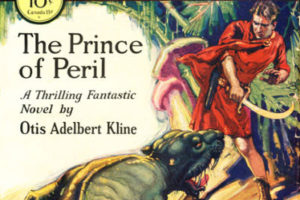
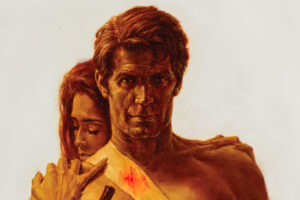
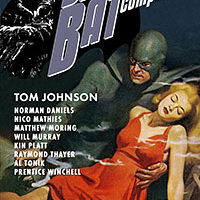
May I humbly add a few to your list? Writers: Leslie F. Stone (Leslie Frances Silberberg), Lilith Lorraine (Mary Maude Dunn Wright), Miriam Allen deFord, Amelia Reynolds Long, and Maria Moravsky (see, http://www.isfdb.org/cgi-bin/ea.cgi?14455)? There were quite a few other obscure women authors in the early science fiction pulps but they didn’t produce very many stories. Also, Judith Merril who snuck in at the end of the pulp days. If you consider 1952/53 as end of the pulps, she would count as had a few stories and essays published in the sci-fi pulps before then.
As for characters…how about Gerry Carlyle, Interplanetary Huntress (written by Arthur K. Barnes and sometimes Henry Kuttner)?
As I noted, I was never aimed to be exhaustive in all female authors, etc, and welcome people adding to the list, so long as they worked for the pulps (author, artist, editor, etc).
another thing that gets ignored is that an awful lot of the authors used male pen names but were actually women. Andre Norton comes to mind as one that everyone knows, but doesn’t realize was actually female.
Uh, I actually noted this, so its not ignored. And there is an upcoming article on just pseudonyms.
[…] Fonte do artigo original: The Pulp Super-Fan. […]